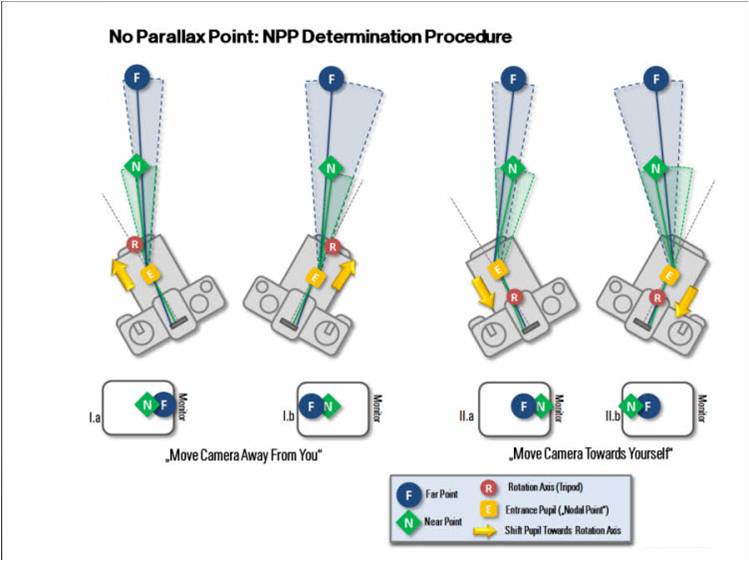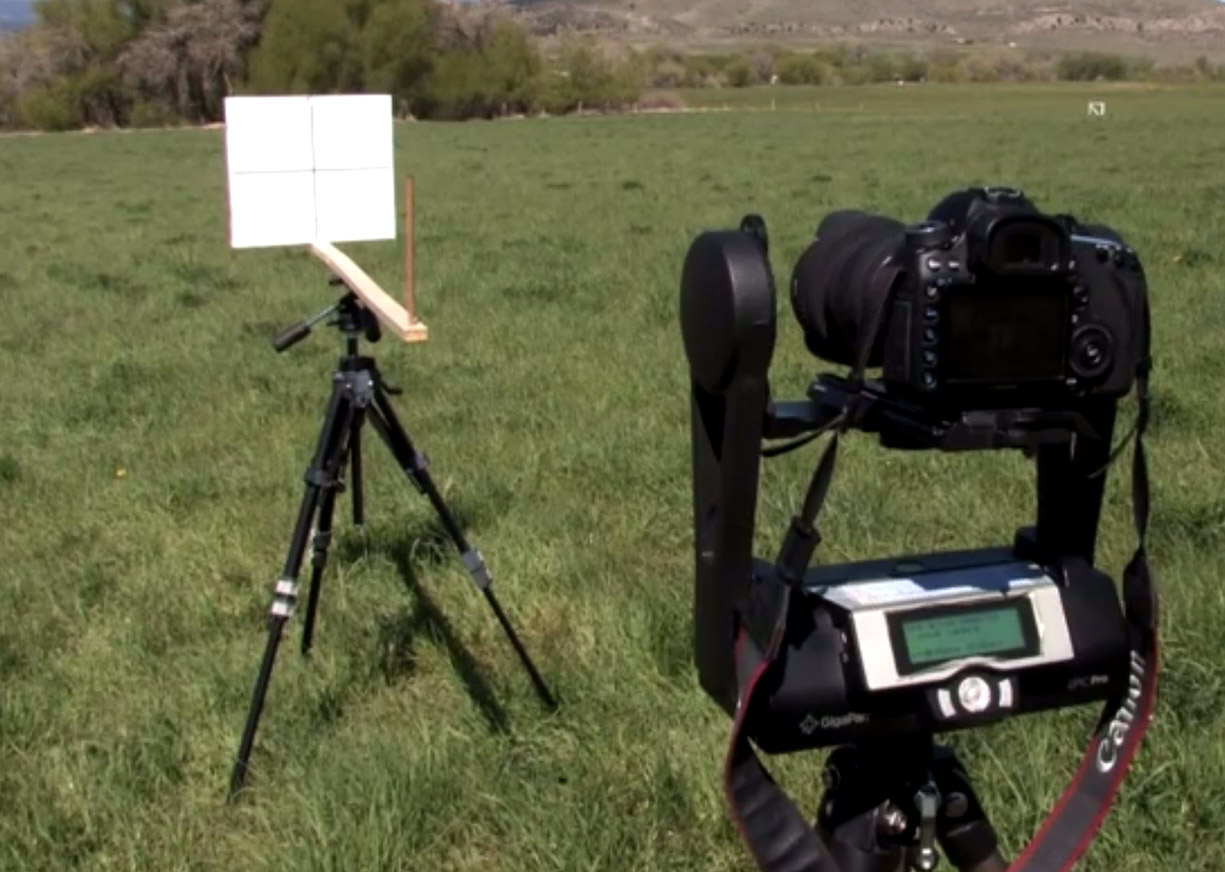How to Determine the No-Parallax Point
For Panoramic Photography
March 6, 2023
John Freeman
Abba’s Creations Photography
No-Parallax Point Definition
An important aspect when shooting Gigapixel photos using a telephoto lens is to assure that you have your camera and lens mounted on your No-Parallax (Nodal) Head so that the rotation in both the horizontal and vertical axis rotates about the No-Parallax Point of your lens. If you rotate your camera around some randomly chosen point, your images may show parallax, exhibit ghosting and be difficult or impossible to stitch.
- With most lenses, there is “one special point” around which you can rotate your camera and get no parallax.
- This special “no-parallax point” is the center of the lens’s entrance pupil, a virtual aperture within the lens.
- In the panorama photography community, this special point is often called the “nodal point”, but it is in fact unrelated to the actual nodal point of the lens.
- The actual nodal points are other points on the optical path, which are of no significance to most photographers.
- The no-parallax point is also the “center of perspective”, but this term is not commonly used and does not describe why the no-parallax point is important.
- The entrance pupil is the image of the limiting aperture or diaphragm, as seen through the front of the lens.
- The image seen may be magnified by the effect of the lens elements in front of it, and the image is displaced from the actual position of the aperture. It is the center of this image about which the camera must be rotated to avoid parallax.
- Everything considered, the best term for the no-parallax point may be (surprise!) the “no-parallax point”.
- “Entrance pupil” is correct although a bit imprecise to a geometry purist; it makes a good term for searching the literature and would be preferred in formal writing.
- “Nodal point” is commonly-used, but incorrect and leads to confusion. It should be avoided when writing and interpreted with caution in reading the literature.
- Regardless of what you call the no-parallax point, it is easily found by trial and error. Just adjust the rotation point so that foreground and background points stay lined up.
- It is critical to identify the Non-Parallax Point for your lens.
- Most common tripod heads do not rotate about this point. A special No-Parallax head is needed to mount the camera at the NPP.
- Failure to ID this point will likely result in ghosting or multiple images of items in the near foreground and/or failure of the stitching software to properly stitch the image.
How to locate the No-Parallax Point
- Figures I.a and I.b illustrate the situation where the horizontal center of rotation is in front of the no-parallax point.
- The Red dot represents the center of rotation. The yellow square labeled Entrance Pupil is the no-parallax point
- As the camera is panned from left to right the Far Point target moves from the right of the Near Point target to the left of the Near Point target.
- This tells you that the no-parallax point is behind the center of rotation and the camera needs to be moved forward.
- Figures II.a and II.b illustrate the situation where the horizontal center of rotation is behind the no-parallax point.
- The Red dot represents the center of rotation. The yellow square labeled Entrance Pupil is the no-parallax point
- As the camera is panned from left to right the Near Point target moves from the right of the Far Point target to the left of the Far Point target.
- This tells you that the no-parallax point is in front of the center of rotation and the camera needs to be moved backward.
- Based on the above information slowly move your camera in the direction indicated on the nodal slide, moving in small amounts until when you pan from left to right you see no movement of the Far Target relative to the Near Target as shown on the next illustration.

- This Figure illustrates that once you have located the no-parallax point directly above the center of rotation you should see no movement of the Near Point target relative to the Far Point target.
- Once you have identified your not-parallax point, I suggest that you make a mark on the nodal slide or record the position in a way that you can easily assemble your camera to the No-Parallax Head when you get to the field.
- Note that if you are using a Zoom Lens, the n-parallax point will most likely be different for different zoom settings. It will always be the same for a given focal length.
- I keep a cheat sheet for all my commonly used lenses in my camera bag.

- This Figure shows my home made rig for identifying the no-parallax point.
- I made a poster board target with a cross hair on it as my far target. I have fastened it to a 6 foot long “1 by 2” board. At the near end I drilled a hole in the board and inserted a 3/8 dowel rod that has been sharpened like a pencil.
- I will set this jig up some 10 to 30 feet away from the camera. The distance is larger for longer focal lengths.
- This works well for doing the procedure outlined above.
- This Figure shows my home made rig for identifying the no-parallax point.
- I made a poster board target with a cross hair on it as my far target. I have fastened it to a 6 foot long “1 by 2” board. At the near end I drilled a hole in the board and inserted a 3/8 dowel rod that has been sharpened like a pencil.
- I will set this jig up some 10 to 30 feet away from the camera. The distance is larger for longer focal lengths.
- This works well for doing the procedure outlined above.

Feel free to contact me for more information and any questions you may have.
